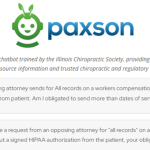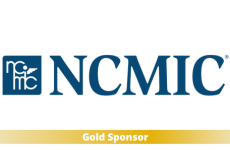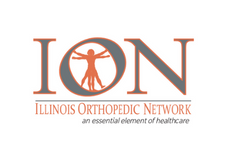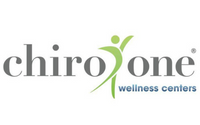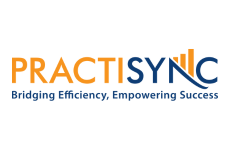
E/M RVU vs CMT RVU – Is This a Problem?
Editor’s Note: The ICS has an on-demand course with Dr. Gwilliam covering the entire -25 modifier issue and all of the tips here.
Learn why understanding RVUs matters when billing CMT and E/M services on the same day. Dr. Gwilliam’s toolkit helps chiropractic physicians document clearly, prove distinct services, and get paid fairly.
Referenced Links:
E/M and CMT Bundling Prevention Toolkit
Transcript:
Marc:
So last week we talked about the RVU system, or the RBRVS system, that is put together that helps determine what things cost, especially Medicare. Obviously, that was an easy one. But also, insurance companies use these to point to them. Sometimes regulators use them and things along those lines to determine appropriate pricings and things along those lines, but we talked about the mechanics of how those are built. This week’s a little bit different. All of this is really centered around the toolkit that Dr. Gwilliam put together for making sure that you are showing separate and distinct E/Ms when performed on the same day as a CMT, right? And so let’s talk about how this matters to that particular system. Why does the RVU system matter as we’re discussing billing a CMT and an E/M on the same visit?
Dr. Gwilliam:
Let’s back up a little bit. If we look at a CMT, we are told that it includes a pre-service, in-service, and post-service amount of work. And when we read the description of that work, it describes some evaluation and therefore payers take the leap to say, well, then all evaluation management is already included in a CMT, and that’s, that’s our challenge. So they’ll rely upon that to bundle it in and not pay separately for an E/M. And I like to compare CMT to pie. So if I were to be, let’s say that I’m the one selling the pies, all right? And I’ve got a pecan pie that I buy myself for $15, and it’s a regular-sized pie. You know, it’s whatever 12 inches is 10 inches, the standard size for a pie, and it’s $15, and that’s a pecan pie. And then I have a pumpkin pie over here, and it’s also $15, and it’s a standard pie. And I would sell you two pies, and you pay 30 bucks. But CMT codes are, the way that they’re described is that they include other things within them. Among them is the E/M service. So they do include a certain amount of evaluation. I mean, you have to evaluate a patient to determine if they need to be adjusted. That makes sense. It’s logical. You’ve got to figure out if they need an adjustment that day. You’ve got to palpate them. You’ve got to ask them some questions. And that work is indeed included in the adjustment itself. It’s kind of like a pie with multiple flavors. And if you’ve ever seen one of those pies where they put a layer of crust down the center and half of it is pecan and half is pumpkin, and you can buy that $15 pie with multiple flavors in it, but it’s still just one pie. And that’s sort of the perspective. It’s that it’s all in there. So our challenge is, how do we, how do we, how do I sell two pies separately and get paid for both of them, rather than this single pie with multiple ingredients built into it, and this is where we look at the RVU valuation system as some rationale behind why, indeed, there are two pies in many circumstances. The toolkit that will link to and will give you access to explains how to make sure you’re very clearly communicating there are two separate pies, but the RVU concept is the why, partly part of the why. There are many whys, but one of the main Whys as to why they need to be clearly separate, and you should be paid $15 for each pie.
Marc:
So all of those things matter, especially now we look at that pie right and the RVU difference between? What is the RVU difference? Did we cover that between an E/M and a CMT?
Dr. Gwilliam:
So let’s use the most common codes we probably use. The 9941 is CMT for three to four regions. Most commonly used code by chiropractors. Its RVU is 1.17 or sorry, 1.19 this year, at the time we’re making this recording, so 1.19 that’s its relative value in and of itself. That doesn’t tell you the dollar amount. That just says its relative value. So if there was a service that was worth 2.4, that’s worth about double, right? If there was a service, then in theory, Medicare would pay twice as much for that other service? Well, let’s look at 99212, which would be your established patient, level two, E/M service. It’s what a chiropractor might use for a re-exam, like they’ve treated the patient for four weeks. They’re performing a full reevaluation.
Marc:
Or a new injury for an existing patient, right?
Dr. Gwilliam:
Or an existing patient within the last three years starting care, the relative value of that exam, that code, 99212, is 1.7. 1.7 relative to, you know, the 1.19 is around the third higher. So if I go back to my PI metaphor, it’s like I’ve got this, this $15 pie, and what they’re telling me is that $15 pie includes another pie that’s actually 20 bucks, and they’re cramming it into my pie and paid me 15 bucks when I’ve got two full pies here I’ve got two full pies, I should get paid separately for each of them, but the relative value unit concept tells me that the EM service that is inside that pie is worth more than the pie itself. It’s worth the 1.7 instead of 1.19, so conceptually, does it make sense that it’s bundled in when we’re doing all this extra evaluation work at a re-exam, at that encounter, and we have a very valid argument as to why we need to clearly separate them to tell that story.
Marc:
Yeah, and that’s super important, and the toolkit helps. So make sure, and we’ll include a link down below to the toolkit. Make sure that you review the toolkit and its long. I’m not gonna lie, it’s long, but this is really super important for you to understand, because you need to understand what is, what’s included in the pumpkin pie, right? It’s you’ve got to know what’s in that particular pie to make sure that you understand why you have to separate some things out, why you have to do and utilize those tips at the end to tell the right story, to very clearly indicate that there are two distinctly different pies, and not just one larger pie crammed into it. But this is one of my points of contention. This is one of the things that I, and Dr. Gwilliams probably smiling because he’s heard me rant about this so often, is it’s frustrating because what we end up doing is do all of the work that’s appropriate for a 99212, right? And then they cram it inside the same fee that’s included in the CMT. And if that’s the argument, and one of the things that I argue all the time is that then, in theory, the CMT is very undervalued, because if these components that make up a legitimate examination, a level two exam, are all included in the CMT, which they assert they are. If that’s the case, then there is no reason why the CMT should be valued at less than the E/M, the level two examination; it doesn’t make any sense, right? The math doesn’t math, and so it’s super important for our doctors to utilize the appropriate tools to tell the right story on both the claim form and in the documentation to clearly show, in that analogy, let’s beat it down into the ground, right, that there are two separate pies.
Dr. Gwilliam:
It’s almost like another way to look at it is that it’s one gigantic pie, but they want to bundle it and bundle it in, but pay me for all of the stuff in there, and it’s not just a little 10-inch pie. This is a big old Costco pie, and it’s gigantic, and it has it’s worth more. So in the in that toolkit, what we try to do is do a deep dive into every single concept you could possibly consider that might make it very, very clear to the buyer that I have these separate services, these separate pies, and we’ve given you specific actionable steps that you can employ to to dramatically increase the odds that you can convey the separate service, and I like to think of as ammunition. Each tip we’ve given in that toolkit is another bullet that you can put into your weapon, that you can fire at your target, so that you can achieve the goal that you’re trying to adjust to get paid fairly for the work that you do.
Marc:
And that’s it. We want our doctors, you know, I say this, and I have a phrase I use a lot. You provide a good and valuable service, and you deserve to be paid for it, and insurance companies don’t want to do that, and so we want to find ways to close their loopholes that they’re using in order for you to be able to be paid appropriately. So make sure that you review all of those things in the toolkit. Don’t shortchange yourself. Don’t just skim it. It’s important. It takes a little bit of extra work from you, but at the end of the day, a little bit of extra work can ultimately result in a lot of extra payment, which is appropriate, by the way, not inappropriate payment, and not just payment for the sake of payment, but payment for the work that you’re actually doing and those services that you’re providing your patients that are fully and completely legitimate. So, cool. Thanks, doc, and make sure you check out the link down below to the toolkit. We’ll catch you next week.



